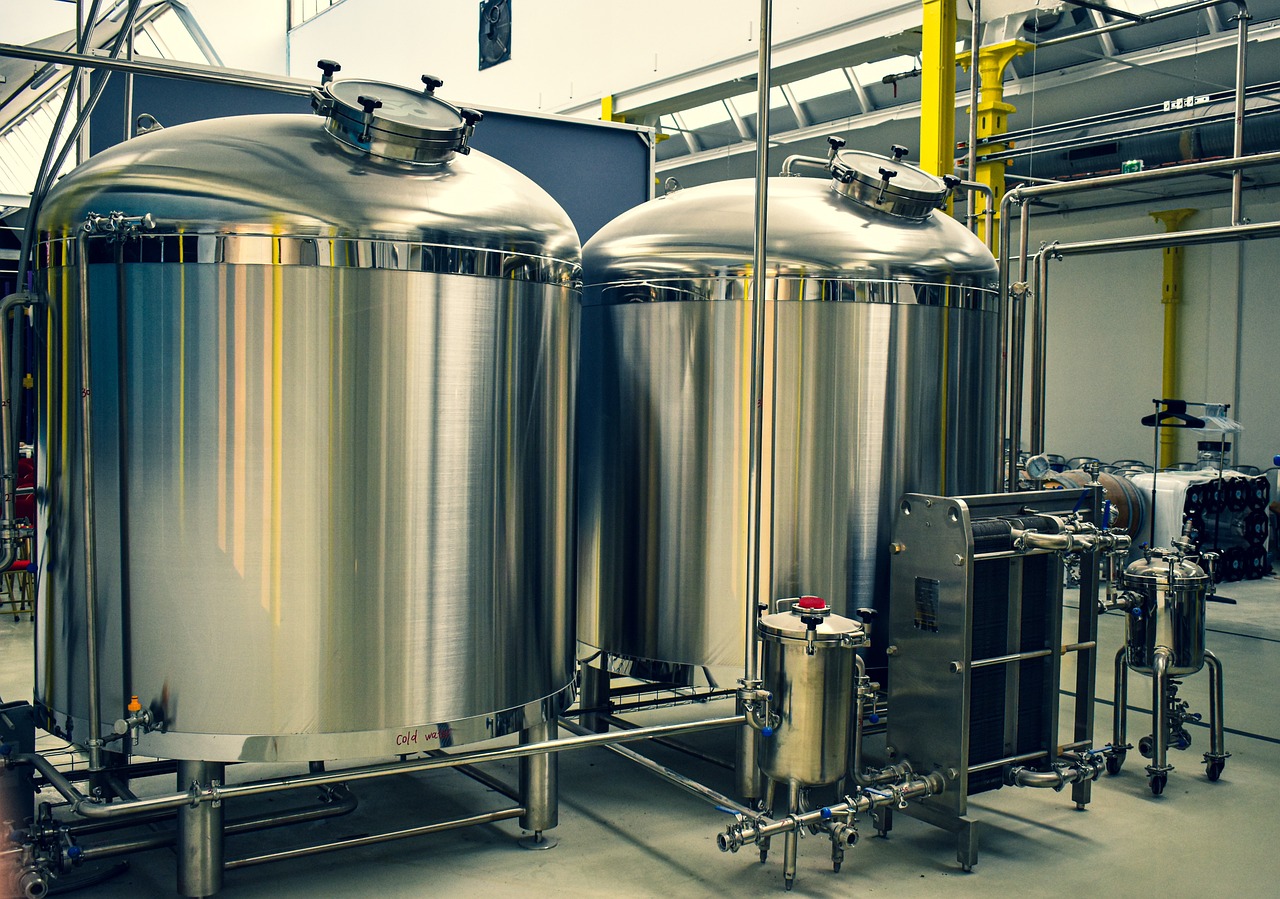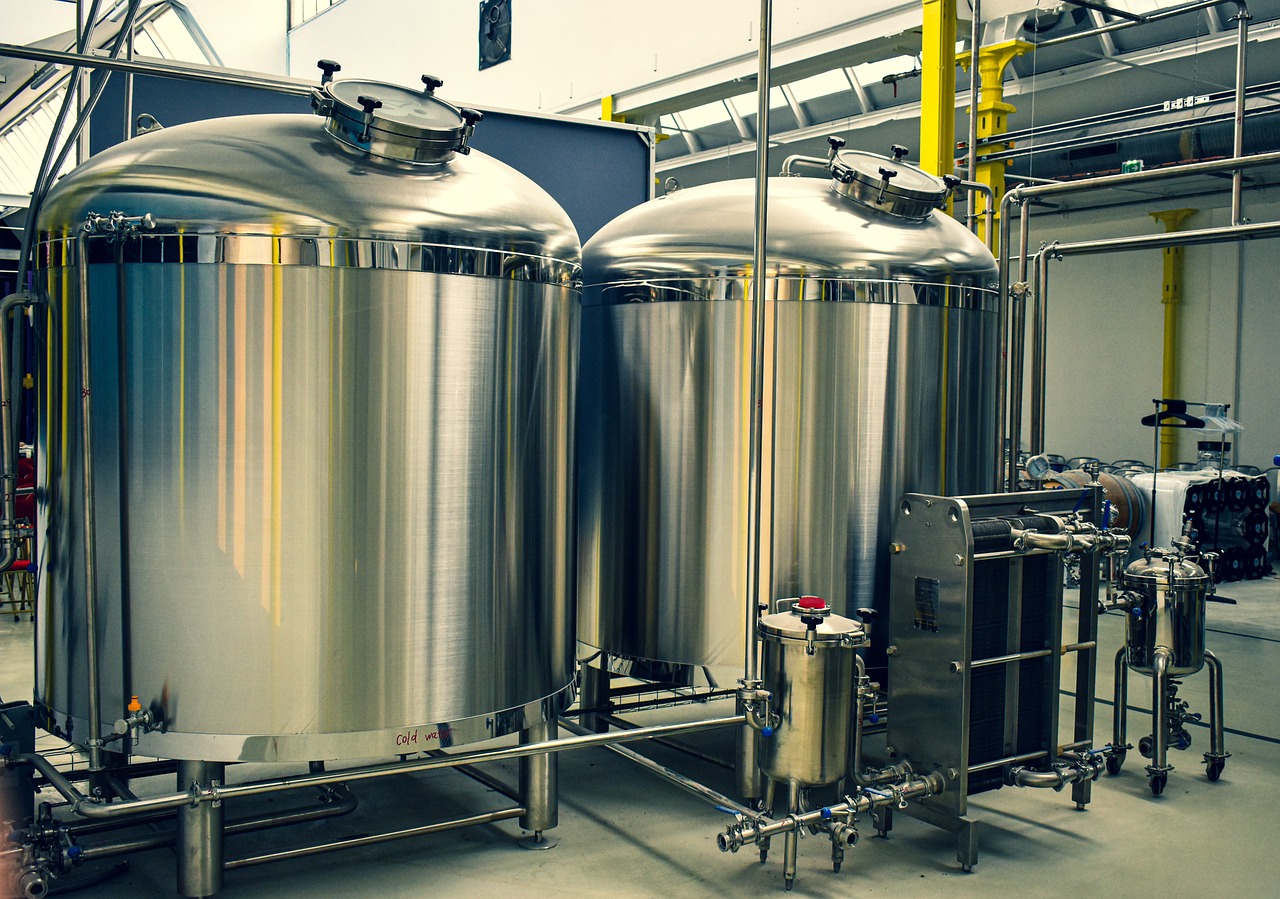Discover the captivating and flavorful world of fermentation with Tastepan.com. Uncover the fascinating histories and traditions that have shaped global cuisines and preserved cultural heritage through the art of fermentation. From sauerkraut to kimchi, kombucha to miso, explore the diverse range of fermented foods that tantalize the taste buds and provide a window into the rich tapestry of flavors found around the world. Immerse yourself in the art of fermentation and embark on a culinary journey that will deepen your appreciation for food and culture.

The History of Fermentation
Fermentation, the ancient art of food preservation and transformation, has a long and fascinating history. From its origins in ancient civilizations to its modern resurgence in the culinary world, fermentation has played a crucial role in shaping global cuisines and cultural identities.
The origins of fermentation
The origins of fermentation can be traced back thousands of years to when humans first discovered the transformative power of microorganisms. Although the exact circumstances are unknown, it is believed that early humans stumbled upon the process of fermentation by chance.
One theory suggests that fermentation was first discovered when wild yeasts naturally present in the environment contaminated a batch of grain or fruit. Over time, these wild microorganisms would have consumed the sugars present in the food, producing alcohol and carbon dioxide as byproducts.
Early uses of fermentation
Once the process of fermentation was understood, early humans quickly realized its immense value in preserving food. Fermented foods could be stored for extended periods, allowing communities to have access to nourishment during lean times.
In ancient civilizations such as Egypt, Mesopotamia, and China, fermentation became an essential technique for making bread, beer, and wine. These staple foods not only provided sustenance but also held cultural and religious significance.
Fermentation throughout history
As civilizations developed and cultures intermingled, fermentation techniques and traditions spread across the globe. In Europe, monasteries played a significant role in preserving and refining fermentation practices, particularly in the production of cheese, wine, and beer.
During the Age of Exploration, fermentation took on even greater importance. Sailors relied on fermented foods like sauerkraut and cured meats to sustain them during long sea voyages, as the fermentation process prevented spoilage.
In the 19th and 20th centuries, advancements in science and technology led to a deeper understanding of the biochemical processes of fermentation. This newfound knowledge paved the way for industrial-scale fermentation and the mass production of fermented products.
Fermentation Techniques
Fermentation encompasses a wide range of processes, each resulting in different flavors, textures, and aromas. Here are some of the most common fermentation techniques employed in various culinary traditions.
Lactic acid fermentation
Lactic acid fermentation is one of the most widespread forms of fermentation. It relies on lactic acid bacteria, such as lactobacillus, to convert sugars into lactic acid. This process gives rise to tangy and acidic flavors, as seen in foods like sauerkraut, kimchi, and yogurt.
Alcoholic fermentation
Alcoholic fermentation is perhaps one of the oldest and most well-known forms of fermentation. It occurs when yeasts convert sugars into alcohol and carbon dioxide. This process is used in the production of beer, wine, and spirits, creating a wide range of flavors and aromas.
Acetic acid fermentation
Acetic acid fermentation, also known as vinegar fermentation, occurs when acetic acid bacteria convert alcohol into acetic acid. This process results in tangy and acidic flavors and is commonly used to produce vinegar.
Ethanol fermentation
Ethanol fermentation is similar to alcoholic fermentation, but with a specific focus on producing ethanol. This process is often employed in the production of biofuels, but it also plays a role in the creation of certain types of fermented beverages like sake.

Fermented Foods from Around the World
Fermented foods are found in almost every culture, each with its own distinct flavors and preparations. Let’s explore some of the most beloved fermented delicacies from around the world.
Sauerkraut: Germany’s tangy delicacy
Sauerkraut, a traditional German dish, is made by fermenting finely sliced cabbage with salt. The lactic acid bacteria naturally present on the cabbage kickstart the fermentation process, resulting in a tangy and crunchy sauerkraut. Often enjoyed alongside sausages or as a delicious topping, sauerkraut is rich in probiotics.
Kimchi: The spicy staple of Korean cuisine
Kimchi, a staple in Korean cuisine, is a spicy fermented vegetable dish typically made from cabbage and seasoned with garlic, ginger, and chili peppers. It undergoes a lactic acid fermentation that imparts a tangy and spicy flavor. Kimchi is not only a delicious side dish but also a significant part of Korean cultural identity.
Kombucha: The trendy fermented tea
Kombucha, a trendy and probiotic-rich beverage, is made by fermenting sweetened black or green tea with a symbiotic culture of bacteria and yeast (SCOBY). The fermentation process produces a fizzy, slightly acidic drink with a wide range of flavors. Kombucha has gained popularity in recent years for its supposed health benefits.
Miso: A fundamental ingredient in Japanese cooking
Miso, a traditional Japanese seasoning, is made by fermenting soybeans with salt and a fungus called koji. The fermentation process can range from a few months to several years, resulting in a flavorful paste with rich umami notes. Miso is a key ingredient in many Japanese soups, marinades, and dressings.
Yogurt: A creamy and probiotic treat
Yogurt is a beloved fermented dairy product enjoyed in many cultures around the world. It is made by fermenting milk with lactic acid bacteria, which convert lactose into lactic acid. The fermentation process gives yogurt its distinctive creamy texture and tangy flavor. Yogurt is not only delicious but also packed with beneficial probiotics.
Kefir: The fermented dairy drink
Kefir, similar to yogurt, is a fermented dairy drink rich in probiotics. It is made by fermenting milk with kefir grains, which are clusters of bacteria and yeast. The resulting beverage has a tart and slightly carbonated taste, making it a refreshing option for those seeking a probiotic boost.
Tempeh: Indonesia’s protein-packed specialty
Tempeh, a traditional Indonesian food, is made by fermenting cooked soybeans with a specific fungus called Rhizopus oligosporus. The fermentation process binds the soybeans into a firm patty with a nutty flavor and meaty texture. Tempeh is a popular plant-based protein source and can be cooked in various ways.
Natto: A unique Japanese soybean fermentation
Natto, a peculiar fermented soybean dish, is a staple in Japanese cuisine. It is made by fermenting cooked soybeans with a specific strain of bacteria called Bacillus subtilis. The fermentation process results in a sticky and pungent food with a distinct flavor. Natto is often enjoyed with rice for breakfast or as a topping in savory dishes.
Fermented fish: A pungent delicacy in Nordic countries
Fermented fish, such as surströmming in Sweden and lutefisk in Norway, holds a special place in Nordic gastronomy. These traditional delicacies involve fermenting fish, typically herring, using specific methods and seasonings. The fermentation process creates an intensely pungent and acquired taste that is cherished by some and feared by others.
Fermented vegetables: A global tradition
In addition to the aforementioned examples, fermented vegetables are a global culinary tradition. From pickles in the United States to sauerkraut’s variations in Eastern Europe, nearly every culture has its own take on fermented vegetables. These tangy and crunchy treats not only provide unique flavors but also contribute to a healthy gut microbiome.
Health Benefits of Fermentation
In addition to their delicious flavors and cultural significance, fermented foods offer numerous health benefits. Let’s explore some of the ways in which fermentation can positively impact our well-being.
Probiotics: Supporting gut health
One of the most well-known benefits of fermented foods is their high probiotic content. Probiotics are live microorganisms that help restore and maintain a healthy balance of bacteria in the gut. Consuming fermented foods regularly can support digestion and contribute to overall gut health.
Improved digestion and nutrient absorption
Fermentation breaks down complex carbohydrates and proteins present in food, making them easier for our bodies to digest and absorb. This process can help alleviate digestive issues such as bloating and gas, allowing for better overall nutrient absorption.
Enhanced immune function
The gut plays a vital role in our immune system, and a healthy microbiome is essential for immune function. The consumption of fermented foods can support a diverse and balanced gut microbiome, thus strengthening the immune system and potentially reducing the risk of certain illnesses.
Rid of anti-nutrients
Some foods contain anti-nutrients, compounds that can hinder the absorption of essential nutrients. Fermentation can help reduce the levels of anti-nutrients, such as phytic acid, in certain foods. This process unlocks the nutrients and makes them more accessible to our bodies.
Increased bioavailability of vitamins and minerals
Fermentation can increase the bioavailability of certain vitamins and minerals in foods. For example, the fermentation of cabbage to make sauerkraut actually increases the vitamin C content compared to raw cabbage. Additionally, fermentation can enhance the absorption of minerals like iron and zinc.

Fermentation in Traditional Medicine
Long before the advent of modern medicine, fermentation played an integral role in traditional healing practices around the world. Let’s explore how fermentation is intertwined with traditional medicine in different cultures.
Traditional healing practices
In many traditional healing systems, fermentation was used as a method to preserve and enhance the medicinal properties of plants and herbs. Fermentation could transform raw ingredients into more potent and bioavailable remedies, making traditional medicines more effective.
Fermented foods in Ayurveda
Ayurveda, an ancient Indian system of medicine, emphasizes the use of fermented foods to promote digestive health. Fermented dairy products like yogurt and buttermilk are believed to balance the doshas (fundamental energies) in the body and support overall well-being.
Fermentation in Chinese medicine
Chinese medicine places great importance on the harmony of the body and the balance of yin and yang energies. Fermented foods, such as miso and soy sauce, are used in Chinese medicine as a way to promote digestive health, strengthen the spleen, and nourish the body.
The Cultural Significance of Fermentation
Beyond its practical uses, fermentation holds great cultural significance in many societies. Let’s explore how fermentation has become intertwined with traditions, religious ceremonies, and cultural identity.
Fermentation as a preservation method
In the days before refrigeration, fermentation was one of the most reliable methods of food preservation. Many fermented foods, such as sauerkraut and pickles, were created out of necessity, allowing communities to have access to food during times of scarcity or long winters. These preservation techniques became embedded in culinary traditions and continue to be celebrated today.
Fermented foods in religious ceremonies
Fermented foods often play a role in religious ceremonies and rituals. For example, wine and bread are central to Christian sacraments, symbolizing the blood and body of Christ. In some Eastern traditions, fermented foods are offered as sacred offerings during religious festivals and ceremonies, representing abundance and spiritual connection.
Fermentation as a symbol of cultural identity
Fermented foods are deeply intertwined with the cultural identity of various communities. These foods reflect the local climate, available ingredients, and historical traditions. From the sauerkraut of Germany to the kimchi of Korea, fermentation techniques and recipes have been passed down through generations, preserving cultural heritage and connecting communities.
The Science Behind Fermentation
While fermentation has been practiced for thousands of years, it is only in recent centuries that scientists have begun to unravel the intricacies of the process. Let’s delve into the scientific principles behind fermentation.
Microorganisms involved in fermentation
Fermentation relies on the action of microorganisms, primarily bacteria and yeast. Lactic acid bacteria, such as lactobacillus, convert sugars into lactic acid, leading to the tangy flavors of fermented foods. Yeasts, on the other hand, convert sugars into alcohol and carbon dioxide, creating the effervescence of fermented beverages.
Role of enzymes in fermentation
Enzymes are crucial catalysts in the fermentation process. They facilitate the breakdown of complex molecules, such as starches and proteins, into simpler compounds that can be fermented. Enzymes present in the raw ingredients or produced by microorganisms help initiate and accelerate fermentation reactions.
Chemical reactions during fermentation
Fermentation involves a series of chemical reactions that transform sugars into various compounds like lactic acid or alcohol. These reactions are typically anaerobic, meaning they occur in the absence of oxygen. The breakdown of sugars by microorganisms releases energy in the form of ATP (adenosine triphosphate), driving the fermentation process.
Factors influencing fermentation process
Several factors can influence the fermentation process, including temperature, pH, salt concentration, and the presence of other microorganisms. Each fermented food requires specific conditions to encourage the desired microbial activity, ensuring a successful and safe fermentation.
Fermentation in Modern Gastronomy
In recent years, fermentation has experienced a renaissance in the culinary world. Chefs, food enthusiasts, and researchers have embraced fermentation not only as a preservation technique but also as a way to elevate flavors and create innovative dishes.
Exploring the world of fermented ingredients
Chefs and culinary enthusiasts are constantly experimenting with new fermented ingredients to harness unique flavors and textures. From fermented black garlic to fish sauce made from anchovies, the world of fermentation offers a vast array of possibilities for culinary creativity.
Chefs embracing fermentation techniques
Many renowned chefs have embraced fermentation as a fundamental technique in their culinary repertoire. They incorporate fermented ingredients into their dishes, elevating the complexity of flavors and adding a touch of acidity and umami. These chefs are not only preserving traditional methods but also pushing the boundaries of gastronomy.
Fermentation as a trend in high-end restaurants
In recent years, fermentation has become a popular trend in high-end restaurants. Fermentation chambers and dedicated fermentation stations are increasingly common sights in professional kitchens, allowing chefs to explore new flavor profiles and create unique dining experiences. Fermentation is no longer limited to home kitchens but has become an integral part of high-end gastronomy.
Fermentation at Home
Fermenting foods at home is a rewarding and cost-effective way to explore this ancient art. With some basic knowledge and simple equipment, anyone can embark on their fermentation journey. Let’s dive into the world of home fermentation.
Getting started with home fermentation
To begin your home fermentation adventure, start by choosing a recipe or food you’d like to ferment. Vegetables like cabbage, cucumbers, and carrots are great options for beginners. Research recipes, gather the necessary ingredients, and prepare the equipment for a smooth fermentation process.
Essential equipment and ingredients
While fermentation can be as simple as a jar and some vegetables, having the right equipment can make the process more efficient and enjoyable. Some essential tools include fermentation jars, weights to keep the food submerged, and airlocks to release excess gases. Additionally, ingredients like salt, water, and starter cultures are commonly used in fermentation.
Step-by-step fermentation guide
- Start by cleaning and sanitizing all equipment to prevent unwanted microbial growth.
- Prepare the vegetables or ingredients you wish to ferment. Clean and chop them into the desired size.
- Create a brine by dissolving salt in water. The concentration of salt will vary depending on the recipe and desired flavor.
- Pack the vegetables tightly into the fermentation jar, leaving some headspace for expansion during fermentation.
- Pour the brine over the vegetables, ensuring they are fully submerged. Place weights on top to keep them beneath the brine.
- Seal the jar with an airlock or a tight-fitting lid.
- Place the jar in a cool, dark location and allow it to ferment. The duration will depend on the recipe and desired flavor profile.
- Monitor the fermentation process by checking for changes in taste, texture, and aroma. Burp the jar occasionally to release any excess gas.
- Once the desired flavor is achieved, transfer the fermented food to the refrigerator to slow down the fermentation process.
Troubleshooting common fermentation issues
While fermentation is a relatively straightforward process, some issues may arise along the way. Here are some common problems and their potential solutions:
- Mold growth: If mold develops on the surface of the ferment, it is best to discard the entire batch to prevent any potential health risks.
- Off flavors or odors: Unpleasant smells or flavors can indicate undesirable microbial activity. If the ferment smells rotten or has an off taste, it is advisable to start fresh and ensure proper sanitation.
- Ferment not bubbling: Lack of bubbling or fermentation activity can be a sign that the fermentation process is not occurring. Check the temperature, salt concentration, and the quality of starter cultures used.
Creative fermentation recipes
Once you have grasped the basics of home fermentation, the possibilities for creative recipes are endless. You can experiment with different combinations of vegetables, spices, and even fruits to create unique flavors. From spicy hot sauces to tangy pickles, homemade fermented foods offer a world of culinary exploration.
Challenges and Controversies in Fermentation
While fermentation is a widely practiced technique, it is not without its challenges and controversies. Let’s explore some of the key issues surrounding fermentation.
Food safety concerns
As with any food preservation method, proper food safety practices are essential to prevent the growth of harmful bacteria. Contamination during the fermentation process can pose health risks, so it is crucial to maintain proper hygiene and sanitation. Using tested recipes and following recommended fermentation guidelines minimize the risks associated with fermentation.
Regulation of fermented foods
The production and sale of fermented foods often fall under food safety regulations. These regulations vary from country to country and can impact artisanal producers and the accessibility of certain fermented products. Striking a balance between ensuring food safety standards and supporting traditional fermentation practices is an ongoing challenge.
Genetically modified organisms (GMOs) and fermentation
The use of genetically modified organisms (GMOs) in the fermentation process has gained attention and sparked debates. While some argue that genetic modification can enhance fermentation efficiency and consistency, others raise concerns about potential environmental and health risks. The impact of GMOs on fermentation practices and the broader food system is a complex and evolving topic.
As we reflect on the rich history, diverse techniques, and health benefits of fermentation, it becomes evident that this ancient art form is much more than just the transformation of food. Fermentation is a testament to the ingenuity of our ancestors, a celebration of cultural traditions, and a gateway to flavorful and nutritious culinary experiences. By embracing fermentation in both our kitchens and our broader food culture, we can preserve the past, savor the present, and shape the future of gastronomy. So go ahead, embark on your own fermentation journey and unlock the transformative power of microorganisms in your home.

